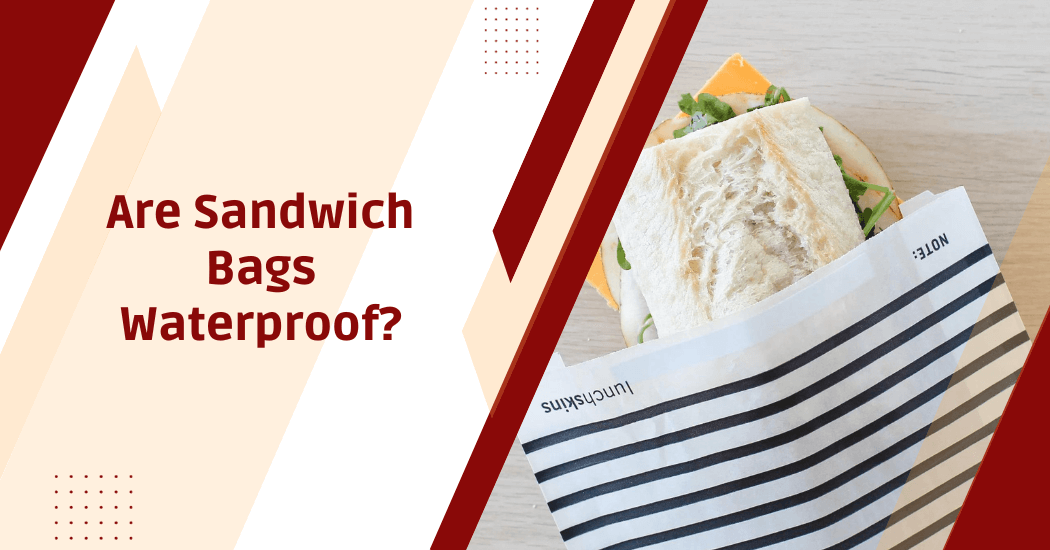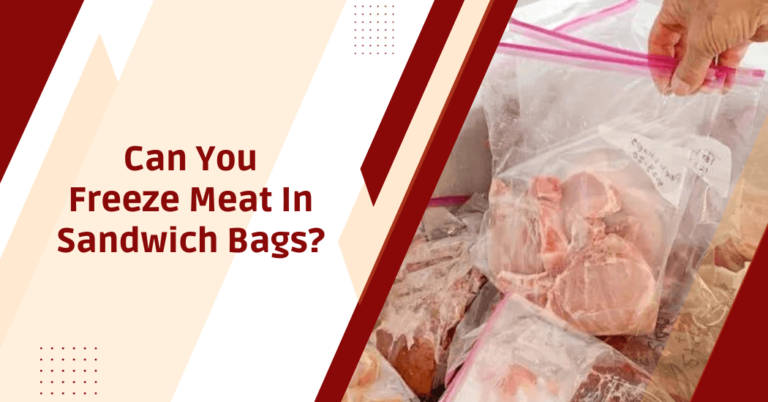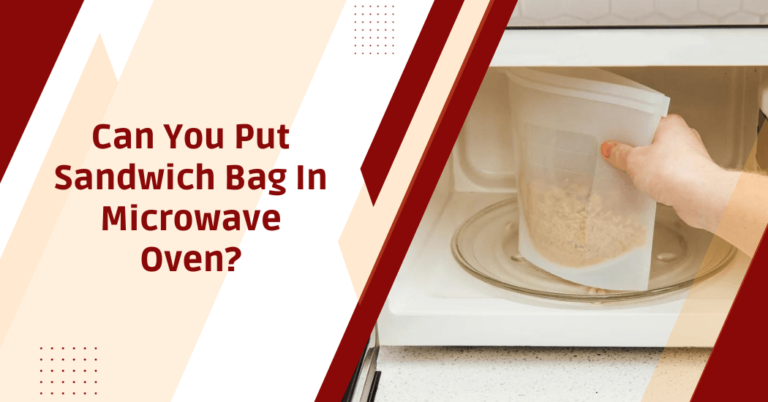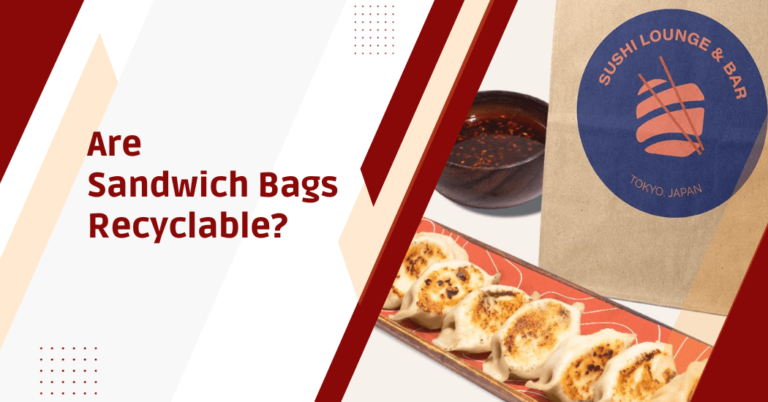Are sandwich bags waterproof?
Sandwich bags, those ubiquitous kitchen companions, have been a staple for packing lunches and storing snacks for decades. Their convenience and affordability make them a household essential.
However, as we reach for sandwich bags to protect our sandwiches, fruits and other items from leaks and spills, a fundamental question arises: Are sandwich bags waterproof?
In this exploration, we will delve into the properties of sandwich bags, their materials and their ability to resist water. By the end, we aim to shed light on whether sandwich bags truly live up to their reputation as waterproof protectors or if there’s more to the story than meets the eye.
Are sandwich bags waterproof?
The short answer is yes, sandwich bags are waterproof. However, this answer is not as straightforward as it may seem. To truly understand the waterproof nature of sandwich bags, we need to take a closer look at their composition and how they work.
Sandwich bags are typically made from low-density polyethylene (LDPE) or high-density polyethylene (HDPE). These materials are known for their flexibility and durability, making them ideal for food storage products like sandwich bags. In addition to being lightweight and resistant to tearing or puncturing, these plastics also have excellent water resistance properties.
The sandwich bags may be technically waterproof but they are not entirely impermeable. This means that while they can prevent large amounts of water from seeping through, they are not completely airtight and can still let in small amounts of moisture.
Factors Affecting On Sandwich Bags Waterproofing
Here are some key factors that can affect the waterproofing of sandwich bags:
- Material composition: As mentioned earlier, sandwich bags are typically made from LDPE or HDPE. While both materials have good water resistance, HDPE is considered to be slightly more impermeable than LDPE due to its higher density and thicker construction.
- Thickness: The thickness of the plastic material used for sandwich bags can also play a role in their waterproofing capabilities. Thicker bags will generally be more resistant to tears and punctures, making them better at keeping moisture out.
- Sealing mechanisms: Another important factor to consider is the sealing mechanism used in the sandwich bag. Some bags have a simple zip-lock style closure, while others have a double-seal or snap-lock mechanism that provides a tighter seal and reduces the chances of water seeping in.
- Zipper closure: Many sandwich bags come with a zipper closure to help keep the contents sealed and prevent any leaks. These zippers may not be completely airtight, leading to some moisture getting in over time.
- Seal quality: The seal at the top of a sandwich bag is crucial for its waterproofing ability. If the seal is not properly closed or damaged, it can compromise the bag’s effectiveness in keeping out water. (How to close sandwich bag properly?)
- Temperature changes: Extreme temperature changes can also affect the waterproofing of sandwich bags. High temperatures can cause the plastic to soften and become more permeable, while low temperatures can make it brittle and prone to tears or leaks.
- Usage duration: Reusable sandwich bags may lose their waterproofing ability over time due to wear and tear, making them less effective in keeping out water.
- Additional features: Some sandwich bags come with added features like extra layers or coatings to enhance their waterproofing properties. These additional features can make a significant difference in how well the bag resists water.
Overall, while sandwich bags are undoubtedly useful in protecting our food and belongings from water, their level of waterproofing can vary depending on these factors. It is essential to consider them when choosing the right sandwich bag for your needs.
Waterproofing comparisons between different brands and types
Here is a table that can provide you with a waterproofing comparison from different brands and types.
| Brand | Type | Waterproofing Level | Durability | Price Range |
|---|---|---|---|---|
| GORE-TEX | Membrane | High | Excellent | High |
| Nikwax | DWR (Durable Water Repellent) | Medium to High | Good | Moderate |
| Kiwi | Silicone Spray | Low to Medium | Fair | Low |
| 3M | Scotchgard Protector | Low to Medium | Good | Low to Moderate |
| Granger’s | Performance Repel | Medium | Good | Moderate |
| Aqua-Tite | Fabric Guard | Low to Medium | Fair | Low to Moderate |
Please note that the “Waterproofing Level” and “Durability” columns are subjective and may vary based on the specific product within each brand. The “Price Range” can also vary depending on the size of the product and the seller. Always refer to the manufacturer’s guidelines for proper application and care.
Tips for choosing waterproof sandwich bags
Now that we have explored the factors that can affect the waterproofing of sandwich bags and compared different options for waterproofing, let’s discuss how to choose the right custom sandwich bag for your needs.
- Consider the purpose: Think about what you will be using the sandwich bag for. If it is simply for storing dry snacks, any regular sandwich bag should work fine. However, if you plan on using it to carry liquids or wet items, look for a thicker and more durable option.
- Check material composition: LDPE and HDPE are both considered safe materials for food storage but if you have any concerns, opt for a brand that specifies its materials as BPA-free.
- Look at thickness: Thicker bags will provide better waterproofing and durability but they may also be more expensive. Consider your budget and needs before making a choice.
- Examine the seal: Make sure the bag has a secure closing mechanism, such as a zip-lock or double-seal, to prevent any leakage.
- Consider additional features: If you know you will be using the sandwich bag for outdoor activities or in extreme conditions, look for options with added features like extra layers or coatings for enhanced waterproofing.
- Read reviews: Take some time to research and read reviews from other customers to get an idea of how well the bags hold up against water.
With these tips in mind, you can confidently choose the right waterproof sandwich bags for your needs.
So, don’t forget to consider these factors and do some research before making a purchase!
Also Read: Can you put a sandwich bag in the microwave?
Alternative waterproofing solutions
While sandwich bags are a popular and convenient option for waterproofing, there are alternative solutions available that can be just as effective.
Here are a few options to consider:
- Reusable silicone food bags: These provide a more eco-friendly alternative to disposable sandwich bags. Made from durable silicone, these bags are waterproof and can be used repeatedly without losing their effectiveness.
- Plastic containers: Hard plastic containers with airtight lids offer excellent waterproofing properties. They’re ideal for carrying liquids or wet items without worrying about leakage.
- Wax or parchment paper: While not as waterproof as plastic, wax or parchment paper can provide a degree of moisture resistance for dry food items.
- Aluminum foil: Aluminum foil can act as a barrier against moisture, making it a suitable option for wrapping food items that are not excessively wet.
- Food storage containers with seals: Containers with tight-fitting lids or Snap-on seals can provide excellent waterproofing for carrying liquids or wet items.
- Glass containers: In terms of environmental impact and long-term usage, glass containers are a superior choice. They’re perfectly waterproof and can be used for storing a variety of items, not just food.
Remember, choosing the right waterproofing solution depends on your specific needs and environmental considerations. Whichever option you decide on, make sure it aligns with your usage requirements and sustainability goals.
Final Words
The answer is yes, sandwich bags can offer some level of water resistance but they are not entirely waterproof. While they are primarily designed to contain and protect sandwiches and other food items from moisture and air, they may not be completely impervious to water.
Their ability to keep contents dry depends on factors such as the quality of the bag, the seal and the duration and intensity of exposure to water. It is essential to choose the appropriate type of bag for your specific needs, whether it’s for storing sandwiches, snacks or items that require a higher level of water resistance.
For more reliable waterproofing, it is advisable to consider specialized waterproof bags or containers designed for that purpose.





